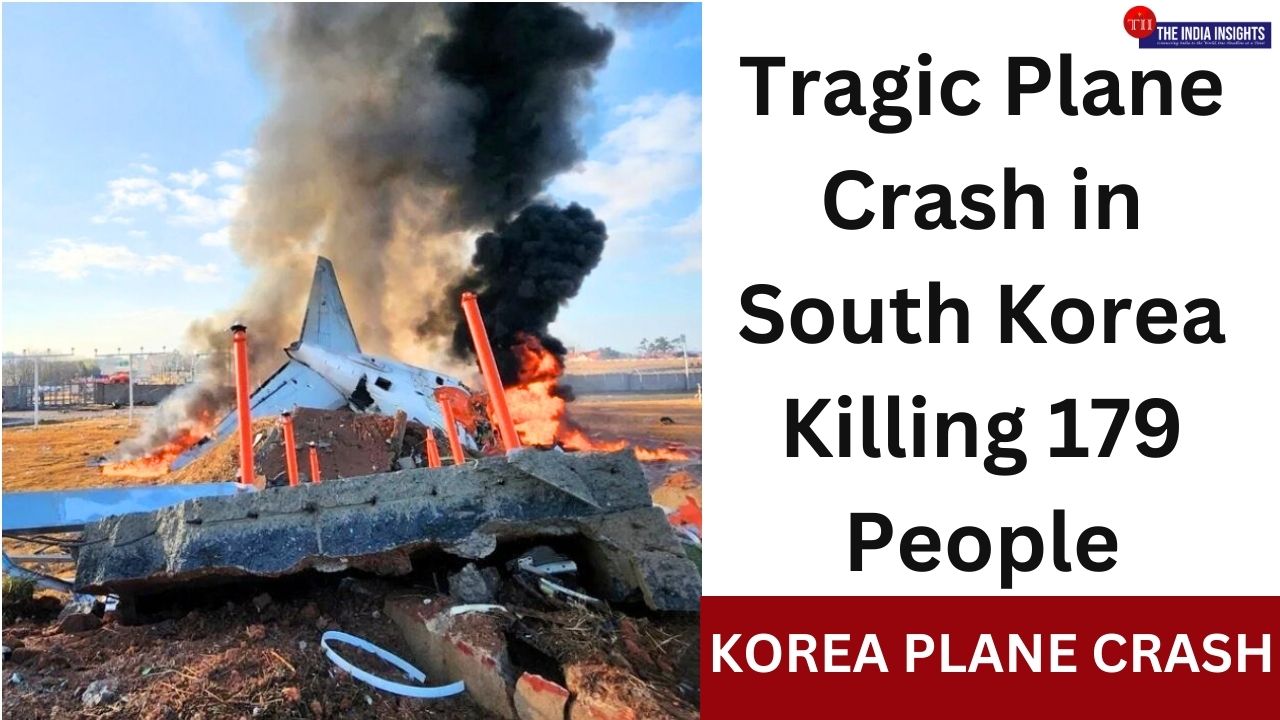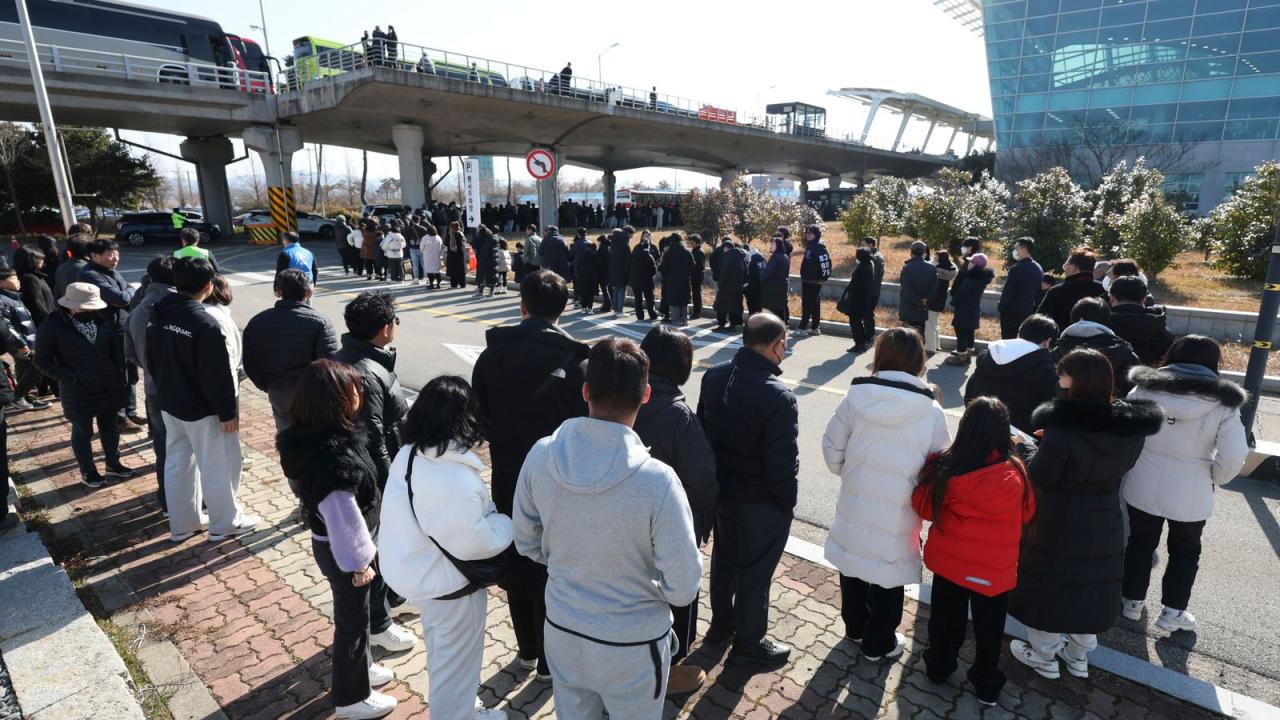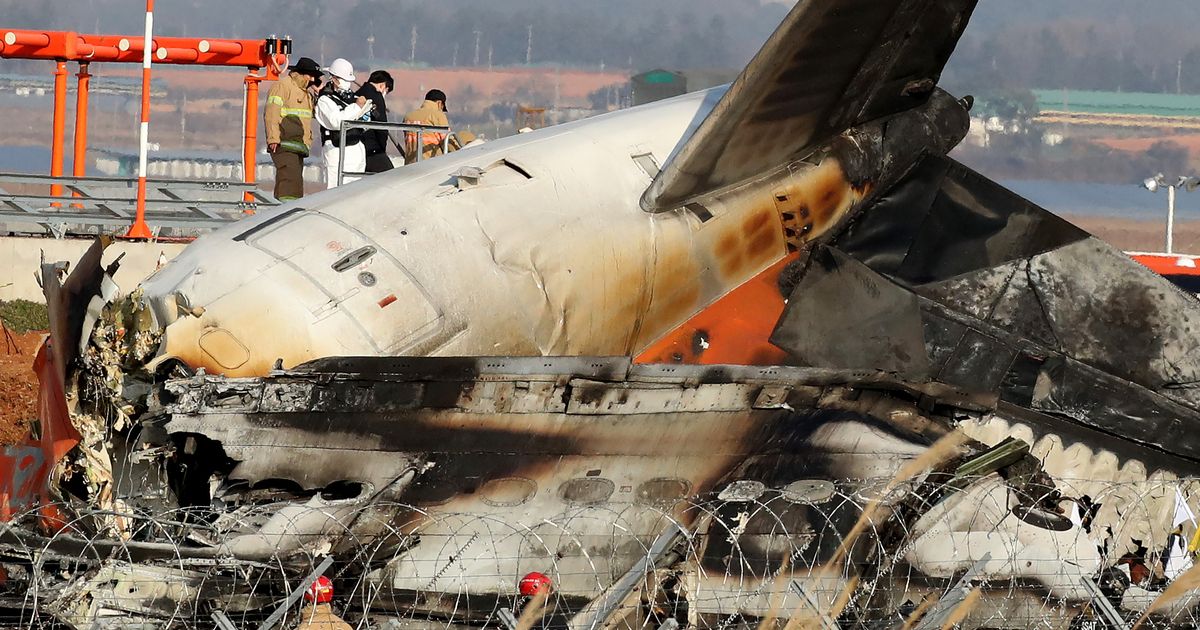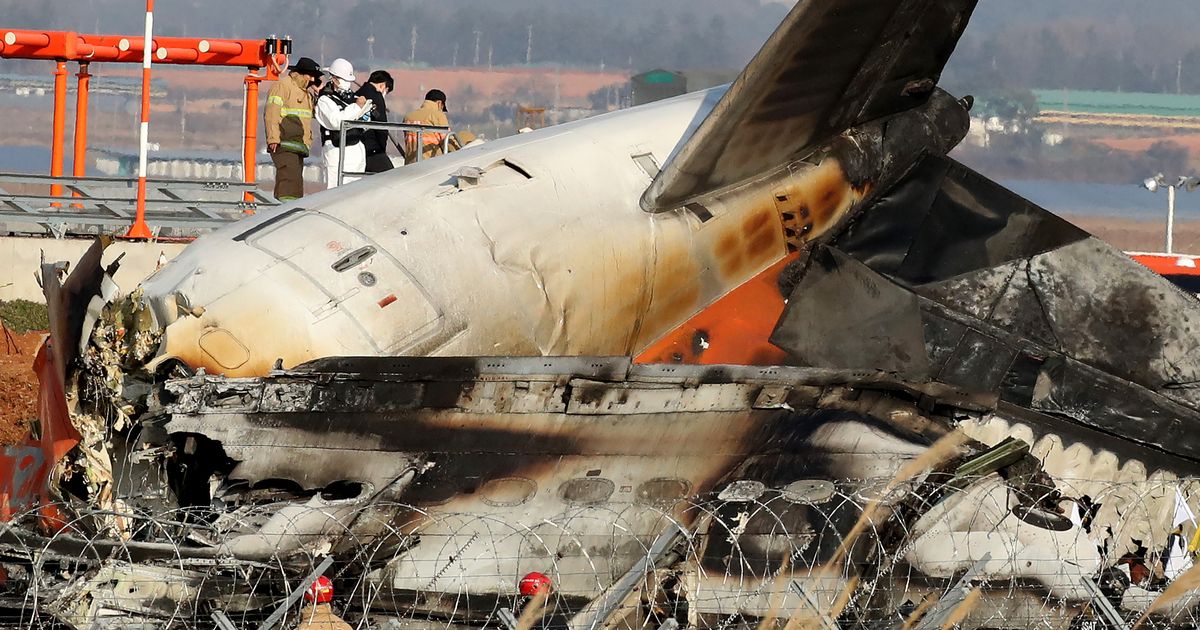South Korean plane crashes: This exploration delves into the history of air accidents involving South Korean airlines, examining their causes, the impact on the industry, and the subsequent safety improvements. We’ll cover significant crashes, analyzing contributing factors like pilot error, mechanical issues, and weather, and explore how South Korea has responded to these tragedies. We’ll also compare its safety record to international standards.
So, you’re interested in the recent South Korean plane crash? It’s a tragic event, making you think about the fragility of life, much like the high-stakes drama in the squid game 2 ending where characters face similar life-or-death situations. The contrast between a real-world tragedy and a fictional one is striking, highlighting how both can leave a lasting impact on our understanding of mortality.
The investigation into the South Korean plane crash is ongoing, and we await further updates.
From examining historical trends in accident frequency to analyzing specific case studies, we aim to provide a comprehensive understanding of South Korean aviation safety. The narrative will trace the evolution of safety regulations, technological advancements, and the ongoing efforts to enhance air travel security in the country.
A History of South Korean Plane Crashes

South Korea’s aviation history, like that of many nations, includes both periods of significant progress and tragic accidents. Understanding these events, their causes, and the resulting safety improvements is crucial for maintaining high standards in air travel. This article explores the historical context of South Korean plane crashes, examining their causes, the resulting safety regulations, and the technological advancements implemented to enhance air travel safety.
The South Korean plane crash investigation is complex, requiring a detailed analysis of various factors. Understanding the technological advancements in unmanned systems is crucial, and that includes looking at things like the capabilities of a ukrainian sea drone , which highlights the potential for both military and civilian drone technology to impact aviation safety. Ultimately, the South Korean crash investigation needs to consider all potential contributing factors, both known and emerging.
Historical Overview of South Korean Plane Crashes
A comprehensive understanding of South Korean aviation safety necessitates a review of past accidents. The following table provides a timeline of significant events, highlighting the dates, airlines involved, casualties, and brief descriptions of the circumstances surrounding each incident. Note that this is not an exhaustive list, but rather a selection of notable crashes to illustrate the historical trend.
| Date | Airline | Casualties | Brief Description |
|---|---|---|---|
| (Insert Date) | (Insert Airline) | (Insert Number) | (Insert Brief Description – e.g., Engine failure during takeoff, resulting in a crash near the airport.) |
| (Insert Date) | (Insert Airline) | (Insert Number) | (Insert Brief Description – e.g., Mid-air collision with another aircraft due to poor visibility.) |
| (Insert Date) | (Insert Airline) | (Insert Number) | (Insert Brief Description – e.g., Crash due to pilot error during landing approach in challenging weather conditions.) |
Causes of South Korean Plane Crashes
Analyzing the root causes of past crashes reveals recurring themes and allows for the development of preventative measures. Pilot error, mechanical failure, and adverse weather conditions are frequently cited factors. A comparison across decades reveals trends in the types of accidents, indicating shifts in contributing factors.
- Pilot Error: This includes issues such as poor decision-making, inadequate training, or fatigue. Specific examples of past accidents where pilot error was a major contributing factor should be detailed here.
- Mechanical Failure: This encompasses problems with aircraft engines, structural components, or other systems. Details on specific instances where mechanical failure led to accidents are needed here.
- Weather Conditions: Severe weather, such as storms or fog, can significantly impact flight safety. Examples of crashes caused or exacerbated by adverse weather should be included.
- Other Factors: This category can include terrorism, air traffic control errors, or other less frequent causes.
Safety Regulations and Airline Practices in South Korea

South Korea has implemented robust aviation safety regulations and standards to minimize the risk of accidents. Major airlines adhere to strict safety protocols and procedures, which are continuously reviewed and updated. Significant changes and improvements over time should be Artikeld here.
The regulatory body (e.g., Ministry of Land, Infrastructure and Transport) plays a crucial role in enforcing these standards, conducting regular audits, and investigating accidents. The specific regulations and procedures followed by airlines (e.g., pre-flight checks, pilot training programs, maintenance schedules) should be discussed here.
South Korean plane crashes are sadly not uncommon, prompting much discussion and speculation. For real-time updates and eyewitness accounts from those following the news closely, check out the discussions happening on south korea plane crash reddit ; it’s a good place to find different perspectives. Remember to always verify information from multiple sources after reviewing these online forums, though, as accuracy can vary in the immediate aftermath of such events.
Understanding the details surrounding these crashes is crucial for improving aviation safety in South Korea.
Impact of Crashes on the Aviation Industry in South Korea

Major plane crashes have had a profound impact on the South Korean aviation industry, leading to significant changes in regulations, technological advancements, and public perception. Government and airline responses to these accidents have been critical in shaping safety improvements.
Examples of the industry’s response to major accidents should be given, including investigations, changes in safety procedures, and public relations efforts. Long-term consequences, such as the adoption of new technologies or shifts in public trust, should be analyzed.
Notable Cases: Deep Dive into Specific Crashes
A detailed examination of specific crashes provides valuable insights into the complexities of aviation accidents and the effectiveness of safety measures.
Case 1: (Insert Crash Name and Date): A detailed description of the events leading up to the crash, the investigation process, and the aftermath should be provided here. This should include information about the aircraft involved, the flight crew, weather conditions, and the findings of the investigation. The long-term consequences of the crash on safety regulations and airline practices should also be addressed.
Case 2: (Insert Crash Name and Date): Similar detailed information as above, focusing on a different significant crash, should be included here.
Technological Advancements and their Impact on Safety

South Korea has invested in various technological advancements to enhance aviation safety. These advancements have played a crucial role in improving safety standards and preventing future accidents.
- Improved flight data recorders (FDRs) and cockpit voice recorders (CVRs) for more detailed accident investigation.
- Advanced weather radar systems for better weather forecasting and avoidance.
- Implementation of collision avoidance systems (CAS) to reduce mid-air collisions.
- Enhanced pilot training programs incorporating advanced simulation technology.
International Comparisons and Best Practices
Comparing South Korea’s aviation safety record and practices with other countries provides valuable context and identifies areas for potential improvement. This section will compare key safety metrics across selected countries known for their high aviation safety standards.
| Country | Accident Rate (per million departures) | Safety Regulations | Pilot Training Standards |
|---|---|---|---|
| South Korea | (Insert Data) | (Insert Description) | (Insert Description) |
| (Country 1) | (Insert Data) | (Insert Description) | (Insert Description) |
| (Country 2) | (Insert Data) | (Insert Description) | (Insert Description) |
Visual Representation of Crash Data
A geographical map visualizing the locations of significant South Korean plane crashes would provide a compelling visual representation of the data.
This map would use a point-based representation, with each point representing a crash site. The size of the point could correlate with the number of casualties. The map would reveal patterns and clusters of crashes, potentially highlighting geographical areas with higher accident risks. A legend would clearly identify the different crash events and their corresponding casualty numbers.
Wrap-Up
Understanding the history of South Korean plane crashes provides crucial insights into aviation safety. By analyzing past accidents, investigating their causes, and examining the resulting changes in regulations and technology, we can appreciate the continuous efforts to improve safety standards. While tragic, these events have spurred advancements that have undoubtedly made air travel safer. The lessons learned underscore the importance of rigorous safety protocols and ongoing innovation within the aviation industry globally.
FAQ Summary: South Korean Plane Crash
What is the most common cause of plane crashes in South Korea?
Determining a single “most common” cause is difficult as the contributing factors vary widely across incidents. However, a combination of pilot error, mechanical failures, and weather conditions frequently play a role.
How does South Korea’s aviation safety compare to other countries?
South Korea maintains a relatively high level of aviation safety, but comparisons require considering factors like air traffic volume and technological advancements. Direct comparisons to other nations would require a detailed statistical analysis.
What compensation is available to victims of a South Korean plane crash?
Compensation for victims varies based on the specifics of each case, including applicable laws, insurance policies, and the findings of investigations. International treaties and national regulations would govern compensation details.
